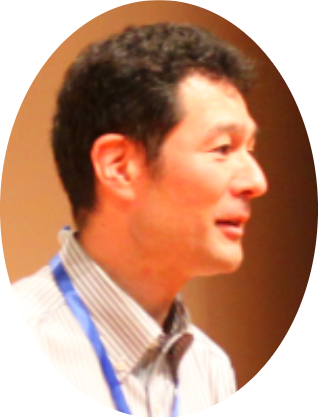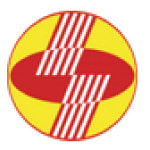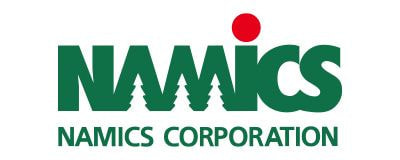Technical Area and Scope

Technical Area and Scope

Message from Program Chair
PVSEC-35 welcomes papers from all the areas relevant to photovoltaic science and technology such as fundamental physics and chemistry, cell and module technologies, characterization techniques, system integrations, grid integration, energy management, policy and market issues, and so on.

Prof. Yuzuru Ueda
The program is composed with the 5 areas + cross cutting areas. “Area1: PV in Sustainable Energy System” is covering the future energy systems including PV as a variable renewable energy and storage technology including batteries and Solar to X technologies. “Area2: System Engineering and Field Performance” covers various kinds of integrated PV technologies. “Area3: Wafer-based Silicon Photovoltaics”, “Area4: Thin-film Photovoltaics and Modules”, and “Area5: Perovskite and Emerging Photovoltaics” include not only materials and devices but also module and system level research. Further more, in this edition of PVSEC, cross cutting areas will provide special occasions to discuss about the cutting edge PV technologies such as Perovskite Tandems, Artificial Intelligence in PV Development and Solar to Hydrogen Materials and Devices.
Many contributed papers from all over the world, together with plenary and invited papers are indispensable to success of the conference. PVSEC-35 will provide unique and variable opportunities to interact with the researchers in the wide area of PV development.
Scope
Area 1
PV in Sustainable Energy System
[Area Chair] Takashi Oozeki (AIST, Japan)
Sub area 1-1
Policy, Market, Finance and Deployment
[KEYWORD] Energy policy, PV policy, Electricity market, PV markets, Finance, Modeling and Scenarios, Social impacts, Economic impacts, Job creation, Training and education, International collaboration, Sustainability, Environmental impacts, Circular economy, Life cycle assessment, Recycling
The goal of this sub-area is to address and discuss aspects required to ensure the long-term success of the PV industry. Toward 100% renewable electricity and carbon-neutral society, this sub-area focuses on strategies to sustain or accelerate high PV growth rates and rapid cost reductions through government, policy, and financing models that are critical to the success of PV deployment. A circular economy for PV modules, components, and systems is becoming increasingly important as deployments continue to grow and may have significant benefits for a more resilient and diverse supply chain at all stages. This sub-area also discusses the environmental sustainability of PV throughout the life cycle including material supply, manufacturing, usage and end-of-life, and social sustainability such as job creation, education and diversity as well as energy access for underserved communities, fostering widespread acceptance of PV power, or upholding indigenous peoples’ rights with regards to PV project development. Furthermore, to overcome current obstacles and achieve further deployment of PV power generation, various international collaborative efforts have been created, and it is expected to produce valuable outputs and outcomes enabling to accelerate PV deployment in global. This sub-area also welcomes to present and discuss potential areas for expanded collaboration.
Sub area 1-2
Grid Integration and Energy Management
[KEYWORD] Smart grid, Micro grid, Resilience, Grid planning and operations, Energy management system, Combination of renewable energies, Aggregation, Virtual power plant, Demand response, Forecasting, Machine learning for energy management, Smart inverter, Grid interface, Maximum power point tracking, Power electronics
The goal of this sub-area is to address the challenges of massive Renewable Energy (RE) integration into the electric power system by discussing a wide range of technologies and methodologies of energy utilization. Measures to solve fluctuation of the Variable RE (VRE) is a topic to increase its massive integration into the electric power system. Surplus energy can be controlled by Demand Response (DR). The demand side increases or decreases its energy consumption by using the DR signal sent by the transmission and distribution organization. Virtual Power Plant (VPP) is consisting not only demand side but also small-scale power plant such as photovoltaic systems. They are aggregated and controlled to keep supply-demand balance. Forecasting technologies are an important issue, and they can increase the performance of the above controls. Recent high-speed parallel computation increases Machine learning technologies which can be applied to the forecasting and above controls. This sub-area also welcomes Power Conditioning System (PCS), power electronics and Maximum Power Point Tracking (MPPT) control, which are expected to be harmonized with the electric power system in the massive integrated situation. This sub-area focuses on these topics.
Sub area 1-3
Green Energy Carriers and Storage
[KEYWORD] Sustainable energy systems, Power to X systems, Solar to gas systems, Solar to chemical energy, Solar to hydrogen systems, Solar to NH3 systems, Solar energy conversion, Solar energy storage, Energy storage system, Energy carriers, Battery
Green Energy Carriers such as “Power to Gas” and “Power to Fuel” are the conversion technology from solar electricity to chemical energy. Storage systems including batteries and Green energy carriers are essential to the massive installation of the variable renewable energy resources such as PV. The goal of this sub-area is to address the challenges of technical and scientific approaches of the conversion from solar energy to chemical energy especially using solar electricity in the system level. This sub area will provide the opportunity to discuss across the multi-disciplines such as material science, electrochemistry, mechanical and chemical engineering, system-level engineering, electric power systems, and techno-economic analysis toward to establish the renewable energy society. This area covers mainly the system level topics, and materials and devices oriented research and development results will be mainly discussed in the cross cutting CC-3.
Area 2
System Engineering and Field Performance
[Area Chair] Kensuke Nishioka (Univ. Miyazaki, Japan)
Sub area 2-1
Integrated PV and Advanced Applications of Photovoltaics
[KEYWORD] Net zero energy building, Net zero energy house, Building integrated photovoltaics, Vehicle integrated photovoltaics, PV powered mobility, Agri-photovoltaics, Floating photovoltaics, Space photovoltaics, Space solar power systems, IoT application, Optical wireless power transmission, PV self-powered systems
This sub-area addresses all relevant aspects of the research and development of the advanced applications of photovoltaics (PVs). As introduction of PV systems grows widely, the deployment of dispersed PV applications is attracting much attention in markets because the space for installation of large PV system like a mega-solar power station is limited. To provide solutions to the issue, this sub-area discusses a wide range of advanced dispersion-type PV technologies such as building-integrated PV, vehicle integrated PV, PV powered mobility, agriculture-PV, water floating PV, space PV including space solar power systems, IoT applications, optical wireless power transmission, PV self-powered systems, and any other state-of-the-art PV applications. This includes the papers dealing with cell and module-related topics, i.e. flexible and lightweight PV, colored PV, concentrator PV, mobile solar power, cells for the laser/LED power transfer, indoor PV, and all kinds of high-performance PVs for integration in consumer products. Any papers related to such PV technologies are welcomed.
Sub area 2-2
Field Performance of Photovoltaic Systems
[KEYWORD] Photovoltaic systems, Field performance, Energy rating, Operation and maintenance, Failure detection, Certification, Recycling technologies, Reuse technologies, Waste treatment, Life cycle assessment, Safety issues
This sub-area will cover an extremely wide range of issues relating to the PV system. The knowledge of analyzed data is significant for the system’s long-term reliability. Yearly data is showing an increase in global temperatures, and testing conditions of quality and safety for PV modules. Differences in regional climate and location properties should be considered. For example, in Japan over the last 10 years they have drastic changes in the climate due to increases in global temperatures.
For a low carbon society, we need to reduce the installation cost of PV systems while thinking about price competition with other renewable energy sources. We also need the reliability of component materials such as glass, back-sheet, encapsulant, junction boxes and cable to prevent defects in PV systems. On the other hand, from the point of view for realizing a sustainable world, PV module recycle/reuse technology and waste treatment is one of our issues at the end of their life span.
Developing accurate characterization procedures for novel PV devices such as perovskite solar devices will be essential to boost the entire PV market. To deliver electricity to all people around the world, PV systems have important roles. Thus, we welcome cross-sectional discussion from researchers in various fields.
Area 3
Wafer-based Silicon Photovoltaics
[Area Chair] Noritaka Usami (Nagoya Univ., Japan)
Sub area 3-1
Materials, Processes, Fundamentals
[KEYWORD] Feedstock, Crystal growth, Ingot, Slicing, Wafer, Structuring/Texturing, Light trapping, Anti-reflection coating, Light management, Doping, Ion implantation, Diffusion, Deposition, Epitaxy, Metallization, Surfaces and interfaces, Passivation, Carrier selective contact, Transparent conductive oxide, Defects, Impurities, Materials characterization, Materials design, Materials informatics, Process simulation, Process informatics, Tandem oriented materials and processes (except for perovskite/silicon tandem)
This sub-area covers materials, processes, and fundamentals for crystalline silicon photovoltaics. In order to further improve and reduce the cost of crystalline silicon solar cells, it is necessary to develop new elemental technologies for each manufacturing process of crystalline silicon solar cells. Individual technologies such as ingot growth, slicing, texturing, antireflection coating, doping, passivation, carrier-selective contact, and metallization will be discussed in this area. Characterization and simulation techniques will also be discussed to better understand each fabrication process. Papers on materials except for perovskite and processes for tandem solar cells with silicon as the bottom cell are welcome. However, papers related to perovskite/silicon tandem solar cells are recommended to be submitted to the cross-cutting area.
Sub area 3-2
Cells and Modules
[KEYWORD] PERC, PERT, TOPCon, SHJ, IBC, Passivating contact, Carrier selective contact, Light management, Transparent conductive oxide, Device physics, Device simulation, Device characterization, Module materials, Encapsulant, Backsheet, Interconnector, Shingling, Bifacial cells and modules, Lightweight and/or curved modules, Colored modules, Cell and module reliability, Cell and module characterization, Silicon tandem cells and modules (except for perovskite/silicon tandem)
Wafer-based Si photovoltaic technology dominates >95% of the global market share because it provides one of the best balances among efficiency, reliability, and cost. Tremendous advancements in various types of high-efficiency Si solar cell and module architectures have been achieved in the past few years. Key technologies in high-efficiency Si solar cells are: (i) the increase in the quality of Si absorbers; (ii) the state-of-the-art carrier-selective passivating contacts; and (iii) the design of light management/metallization for increasing current generation, etc. Advanced cell and module manufacturing technologies such as bifacial, half-cut, large-sized/thinner wafers, and high-density interconnection are also attracting attention for improving the performance and/or reducing the cost. Light-weight, curved and colored module technologies with high efficiency and high reliability have been also developed for building- and vehicle-integrated photovoltaics. This sub-area covers all of issues related to the above elements of Si cell and module technologies and welcomes scientific and technological contributions particularly aiming at further increasing the power conversion efficiency, performance reliability, and lowering the environmental impact as well as the cost. Topics on tandem bottom-oriented research are welcome. However, topics related to perovskite/silicon tandem cells and modules are recommended to be submitted to the cross-cutting area.
Area 4
Thin-film Photovoltaics and Modules
[Area Chair] Itaru Osaka (Hiroshima Univ., Japan)
Sub area 4-1
Organic and Inorganic Photovoltaics
[KEYWORD] Organic photovoltaics, Dye-sensitized solar cells, Thin-film silicon solar cells, Anti-reflection coating, Transparent conductive oxide, Device physics, Device simulation, Materials informatics, Module materials, Cell and module reliability, Cell and module characterization
This sub-area covers a wide research field for photovoltaics based on organic or silicon thin films as absorber, charge transport or selected layer, and buffer layer. These thin-film solar cells are lightweight and have excellent color tones, making them attractive for design, and are expected to be used for window, greenhouse, and wall surfaces for buildings. We will also discuss single junction or multijunction devices that use excellent stacking technology of organic thin films and thin film silicon, aiming for higher conversion efficiency. We attempt to provide a platform for a comprehensive understanding of thin-film photovoltaics through interdisciplinary discussions, including science and technologies for cells and modules. This sub-area also welcomes recent research trends supported by highly accurate first-principle calculation, material informatics, machine learning, state-of-the-art characterization technologies, data science, and advanced device simulation.
Sub area 4-2
Compound Thin-film Photovoltaics
[KEYWORD] Compound semiconductors (chalcopyrite, kesterite, etc.), Chalcogenide photovoltaics, Anti-reflection coating, Transparent conductive oxide, Device physics, Device simulation, Materials informatics, Module materials, Cell and module reliability, Cell and module characterization
This sub-area covers a wide research field for thin film photovoltaics based on compound absorbers. In conventional conferences, the area on each cell has been prepared for deep discussions. Instead, we attempt to provide a platform for a comprehensive understanding of compound thin-film photovoltaics through interdisciplinary discussions, including science and technologies for cells and modules. As seen in the research on perovskite solar cells, the interdisciplinary fusion of various research fields may offer new directions. The goal of this sub-area is to make a novel scheme leading developments for higher performance and long-term reliability of cells and modules through discussion on common and different parts in various fields. This sub-area also welcomes recent research trends supported by highly accurate first-principle calculation, state-of-the-art characterization technologies, data science, and advanced device simulation.
Sub area 4-3
III-V High-efficiency Devices
[KEYWORD] III-V photovoltaics (GaAs, InGaP, nitride, etc.), III-V-based multijunction photovoltaics, Concentrator photovoltaics, Epitaxial growth, Wafer bonding, Exfoliation technique, Materials/device/module-level characterizations, III-V device reliability, Device physics, Device simulation
This sub-area solicits papers related to experimental and theoretical aspects of III-V-based high-performance photovoltaics (PV).
III-V devices offer unparalleled conversion efficiencies thanks to a wide range of material properties including their high absorption coefficients. Higher conversion efficiencies are available when these devices are integrated into tandem or multijunction structures consisting of stacks of two, three, or more subcells. With high resilience under harsh environments, III-V based space solar power generation is also being pursued. These technologies also have the potential to open up new application opportunities, such as vehicle-integrated PVs and use in mobile transportation.
Topics of interest include material/device-level designs, characterization of single and multijunction solar cells, cell processing, novel/unique architectures, stacking methods (monolithic, metamorphic, mechanical, wafer/layer bonding, etc.), exfoliation techniques (epitaxial lift-off, spalling, etc.), and device reliability testing. This includes tandem and multijunction solar cells, where at least one of the subcells is a III-V solar cell. We also welcome technological developments aimed at reducing the manufacturing cost of high-efficiency III-V related solar cells.
Area 5
Perovskite and Emerging Photovoltaics
[Area Chair] Atsushi Wakamiya (Kyoto Univ., Japan)
Sub area 5-1
Perovskite Photovoltaics
[KEYWORD] Perovskite materials, Metal-halide perovskites, Perovskite solar cells, Optical and electronic properties, Materials chemistry, Fabrication methods, Carrier dynamics, Device physics, Theoretical studies
Perovskite solar cells have emerged as a revolutionary technology with the potential to transform the photovoltaic landscape. This session explores the latest advancements in realizing efficient and stable perovskite photovoltaics, featuring key topics relating to the materials design of the transport and absorber layers, carrier dynamics, device physics, and device simulations. The session includes work on lead-free perovskite devices as well as the development of industrial processes for large area modules.
Sub area 5-2
Emerging Materials and New Concepts
[KEYWORD] Quantum dots, Nanostructures, Superlattice, Intermediate band, Hot carrier, Multiple-exciton generation, Up and down conversion, Bulk photovoltaic effect
Further improvement in solar cell efficiency will rely on unconventional PV conversion mechanisms, innovative emerging materials, and game-changing technologies. This session is a multidisciplinary platform for presenting fundamental research in, and novel device concepts for, next-generation high-efficiency photovoltaics. Quantum confined or nanostructured systems such as quantum dots and superlattices will be discussed, together with phenomena such as engineered band alignments, intermediate band concepts, multiple-exciton generation (MEG), up and down-conversions, hot-carrier effects.
CC Areas
Cross Cutting Areas
Sub area CC-1
[Host Area] Area 5
[Sub-Area Chairs] Ryousuke Ishikawa (Tokyo City Univ., Japan)
Yasuaki Ishikawa (Aoyama Gakuin Univ., Japan)
Perovskite Tandems
[KEYWORD] Tandem solar cell with perovskite & silicon photovoltaics & organic photovoltaics (OPV) & CIGS, Metal-halide perovskites, Wide bandgap semiconductors, III-V semiconductors, Solar modules, Durability, Fabrication and manufacturing, Charge transport material
Multijunction solar cells (MJSCs) are a promising technology for achieving efficiencies of over 50%, significantly higher than conventional single-junction solar cells high-efficiency solar energy conversion. The use of multiple semiconductor junctions with different bandgaps allows these devices to absorb a wider range of the solar spectrum and convert more of the incident sunlight into electricity. This cross-cutting sub-area will focus on the latest advances in MJSC technology with perovskite, including new materials and device architectures, scalable manufacturing, applications, including terrestrial solar power, space applications, and concentrated solar power (CSP). This session will also explore the latest challenges and opportunities for commercializing MJSC technology.
Sub area CC-2
[Host Area] Area 3
[Sub-Area Chair] Kentaro Kutsukake (RIKEN, Japan)
Artificial Intelligence in PV Development
[KEYWORD] Materials discovery, Research acceleration, Big-data analysis, Machine learning enabled simulation and modeling, AI-driven optimization, Energy forecasting, Predictive maintenance, Autonomous fault detection
Artificial intelligence has emerged as a powerful tool in the field of photovoltaic research and development. It is widely used in the grid integration and energy management to forecast, schedule, and optimize the operations. In materials research, AI is used to discover and characterize new materials for photovoltaics. It also helps optimize the structure and process parameters in cell and module processes, while utilizing device and process simulations. In the operation of photovoltaic systems, big-data analysis approaches have become popular for performance evaluation and failure detection. This cross-cutting sub-area is a showcase of the state-of-the-art research and development powered by AI.
Sub area CC-3
[Host Area] Area 4
[Sub-Area Chair] Katsushi Fujii (RIKEN, Japan)
Solar to X; Sciences, Materials and Devices
[KEYWORD] Solar to hydrogen devices, CO2 reduced reaction, Solar to NH3 technologies, Photovoltaics plus electrochemistry, Photocatalyst, Artificial photosynthesis, Photocathode, Photoanode, Electrolysis, Co-catalyst, Oxide semiconductors, “Solar to chemicals” related matters
“Solar to X” such as “Solar to Hydrogen”, “CO2 reduction”, and “Solar to NH3” is the conversion technology from solar to chemicals. “Solar to Hydrogen” and “Solar to NH3” are representative technologies for a large amount of chemical or distributed energy storage, and “CO2 reduction” is the key technology for converting CO2 in the atmosphere to chemicals. Thus, a drastic reduction of greenhouse gases in the atmosphere is expected using this “Solar to X” technique.
The goal of this sub-area is to address the challenges of technical and scientific approaches to the conversion from solar to chemicals including solar energy storage especially using solar cell technology. This sub-area will provide the opportunity to discuss across multi-disciplines such as material science, electrochemistry, mechanical and chemical engineering, and techno-economic analysis toward establishing a sustainable society.
This sub-area also welcomes discussion of all technologies in the field of solar to chemical conversion such as direct conversion technique from solar to chemicals.

















